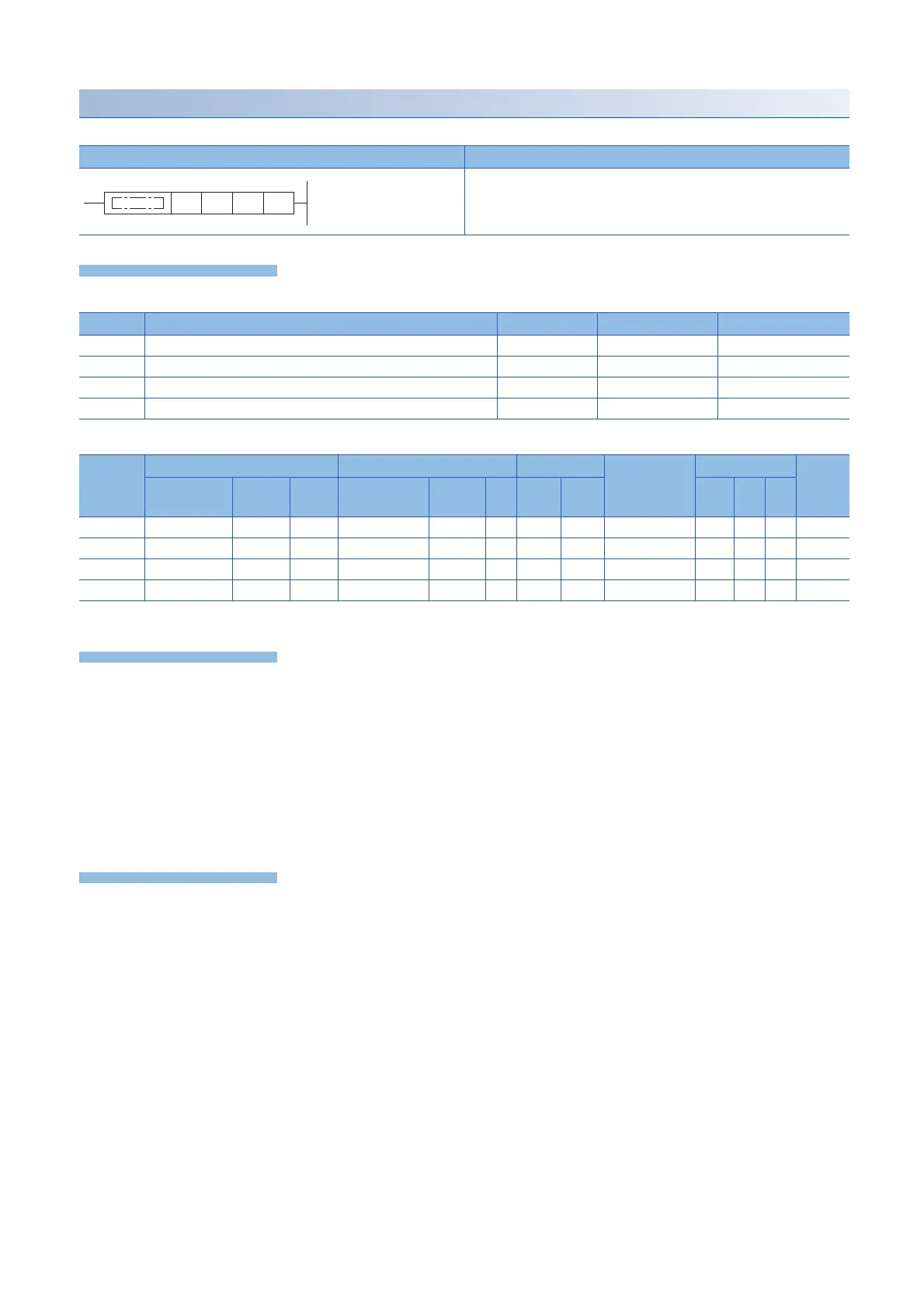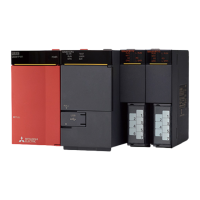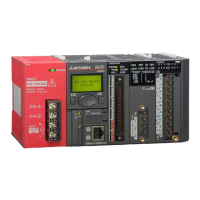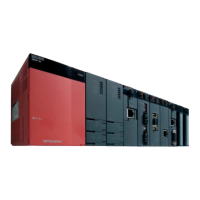672
11 POSITIONING INSTRUCTION
11.1 Positioning Instruction
DRVA [For the FX5 Series operand specification]
This instruction executes one-speed positioning by absolute drive.
■Descriptions, ranges, and data types
■Applicable devices
*1 T, ST, C cannot be used.
This instruction executes one-speed positioning by absolute drive. Specify the positioning address in the absolute system, in
which the transfer distance from the origin (absolute address) is specified for positioning.
• For (s1), specify the absolute positioning address in user units. (The address must be within the range of -2147483647 to
+2147483647 number of pulses.)
• For (s2), specify the command speed in user units. (The speed must be 200 Kpps or lower in frequency.)
• For (d1), specify the axis number from which pulses are output.
• For (d2), specify the bit device of the normal complete flag or abnormal end flag for the DRVA instruction.
For details on the function and error code, refer to Built-in positioning manual.
Two devices are occupied from the device specified in (d2). Make sure that these devices are not used in other controls.
For other precautions, refer to Built-in positioning manual.
Ladder diagram Structured text
ENO:=DRVA(EN,s1,s2,d1,d2);
Operand Description Range Data type Data type (label)
(s1) Positioning address -32768 to +32767 16-bit signed binary ANY16
(s2) Command speed 1 to 65535 16-bit unsigned binary ANY16
(d1) Axis number from which pulses are to be output K1 to 4 16-bit signed binary ANY_ELEMENTARY
(d2) Bit device number of the positioning complete flag or abnormal end flag Bit ANY_BOOL
Operand Bit Word Double word Indirect
specification
Constant Others
X, Y, M, L,
SM, F, B, SB
U\G T, ST,
C, LC
T, ST, C, D,
W, SD, SW, R
U\G Z LC LZ K, H E $
(s1)
(s2)
(d1)
(d2)
*1

